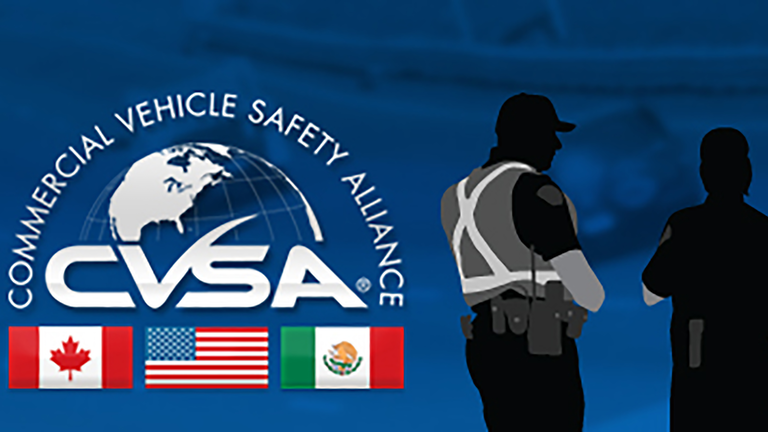In 2020 there were 55.7 million people - 17% of the total U.S. population - who were 65 and older. It is important to note that getting older does not mean a person’s driving days are over. It is essential, however, to plan and take steps to ensure the safety of older loved ones on the road.
That’s why NHTSA is bringing attention to the safety of older drivers. The goal during Older Driver Safety Awareness Week, and every week of the year, is to raise awareness about more senior driver safety.
Click here to download campaign-earned media materials.
As we look into the future, the continued challenge of a driver shortage looms as a “perfect storm,” and older drivers play an integral part. Many variables would have an impact on the shortage. One element of the driver shortage is an aging workforce combined with a decline in the primary demographic group that comprises the bulk of the driver pool. As freight volumes increase, many fleets are having trouble attracting qualified drivers and may be unable to seat trucks or add capacity when freight volumes are growing. If current demographic trends continue, that shortage of truck drivers could increase to 111,000 by the end of the year. Over the next decade, the trucking industry will need to hire 890,000 new drivers or an average of 89,000 per year. Replacing retiring truck drivers will be the most significant factor, accounting for nearly half of new driver hires (45%). The second most influential factor will be industry growth, accounting for 33% of new driver hires. As transportation managers, we are seeing our driver workforce continue to age. The average age of a truck driver in the United States is over 50 years. Since 2000, the number of truck drivers 55 or older has surged 19%, to about 616,000, according to the federal Bureau of Labor Statistics. Truck companies with baby boomer drivers insist their safety record is at least as good as that of younger drivers. We need and depend on this segment of our driving force. As we all age, we do not physically or mentally age at the same rate.
The FMCSA does not have a maximum age limit for drivers of commercial motor vehicles, unlike that of the FAA concerning pilots. All drivers are subject to the medical qualifications of the medical certification requirements of CFR 391.
But the question remains, how do we, as transportation managers, know when it is time to ask for a driver’s keys that can no longer operate safely?
Here are a few suggestions:
- Develop a proactive safety and loss control program with policies and procedures that are not biased to age.
- Require all drivers to have physical examinations completed by an FMCSA-registered medical examiner with a relationship with your company.
- Develop job descriptions and job requirements for all positions based on the actual requirements of the job activity
- Implement a defensive driver training program with updated training annually for all drivers.
- Administer structured check rides at least annually to all drivers to access the driver’s skills and abilities.
- Develop a continuing relationship with all drivers to keep an open line of communication regarding their ability to complete their driving responsibilities safely.
- Be vigilant and observant of the actions of all drivers.
CVSA Announces 2023 Enforcement Blitz Dates
International Roadcheck
International Roadcheck, an annual three-day event when CVSA-certified inspectors conduct compliance, enforcement, and educational initiatives targeted at various elements of motor carrier, vehicle, and driver safety, is scheduled for May 16-18, 2023.
Operation Airbrake Program
CVSA’s 2023 Operation Airbrake Program consists of two annual brake safety campaigns. Brake Safety Week is scheduled for Aug. 20-26. There will also be an unannounced one-day brake safety enforcement initiative, which may be held at any time. It took place this year in late April.
Operation Safe Driver Week
Operation Safe Driver Week, a safe-driving awareness and outreach initiative aimed at improving the driving behaviors of passenger vehicle drivers and commercial motor vehicle drivers through educational and traffic enforcement strategies and interactions with law enforcement, is set for July 9-15.
FMCSA Renews Yard-Move Exemption for ELDs for Another Five Years
The Federal Motor Carrier Safety Administration has renewed an exemption, initially requested by United Parcel Service, that allows: (1) all motor carriers and drivers that use portable, driver-based ELDs to record engine data only when the driver is in a commercial motor vehicle and the engine is powered, and (2) all motor carriers to configure an ELD with a yard-move mode that does not require a driver to re-input yard-move status every time the tractor is powered off.
The exemption allows CMV drivers using portable electronic ELDs to manually record data that would otherwise be required to be automatically recorded when a driver indicates a change of duty status or logs in or out of an ELD (49 CFR 395.26(c) and 395.26(g)). Under the exemption, those requirements do not apply to a driver using a portable ELD unless the driver is in the CMV with the engine powered.
The exemption also allows motor carriers to configure their ELD devices so that a driver can enter yard moves under 49 CFR 395.38(a)(1)(ii) without complying with section 4.3.2.2.2(e) of appendix A to subpart B of part 395 which requires a driver’s yard move status to re-set to “none” if the ELD or CMV’s engine goes through a power-off cycle or the CMV’s engine turns off then on.










